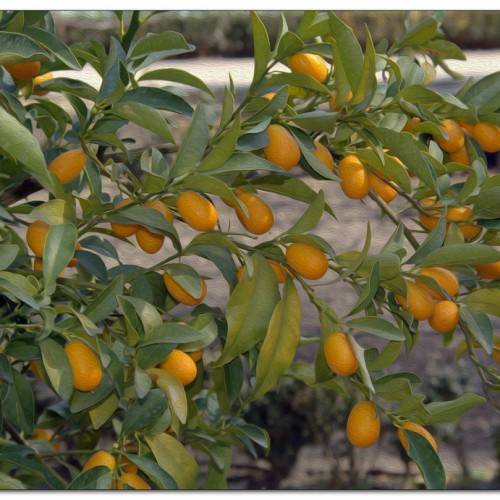
kumquat
Citrus japonica 'Centennial Variegated'
Cycle:
Perennial
Watering:
Average
Hardiness Zone:
9 - 11
Flowers:
Flowers
Sun:
Full sun
Fruits:
Fruits Ready In Winter
Edible:
Yes
Leaf:
Yes
Growth Rate:
Low
Maintenance:
Low
Care Level:
Medium
watering
Kumquat (Citrus japonica 'Centennial Variegated') requires frequent but light watering. The plant should be watered once a week or every other week, depending on the season and temperature. During summer, or when temperatures rise, the kumquat should be watered more regularly. In winter, or when temperatures drop, the kumquat should be watered less frequently. The soil should be kept moist but not soggy. Moisture should be tested by sticking a finger into the soil and feeling the moisture level. A deep watering once a month can be helpful to prevent the soil from drying out. Avoid overwatering, as this can cause root rot.
sunlight
Kumquat (Citrus japonica 'Centennial Variegated') plants need plenty of sunlight to grow and bear fruit. Ideally, they should be placed in a location that receives full sun for at least 6 to 8 hours a day, especially during spring and summer. They also need some shade in the afternoon, as intense sunlight can cause damage to the leaves. Exposure to strong winds should also be avoided, as it can cause leaf burn on the foliage. In the winter, they may require some protection from excessive cold and prolonged frosts.
pruning
Kumquat (Citrus japonica 'Centennial Variegated') should be pruned 2-3 times a year, preferably during the late spring and mid-summer. You should also lightly prune the plant during the fall to keep the plant shapely and prolific. When pruning, trim only local, dead, and/or diseased branches, avoid pruning too much off the main body of the plant. Pruning the kumquat will help reduce stress on the plant, improve air circulation, encourage new growth and also help maintain the desired shape of the plant. For best results, prune the kumquat with sharp, sterile pruning shears.
